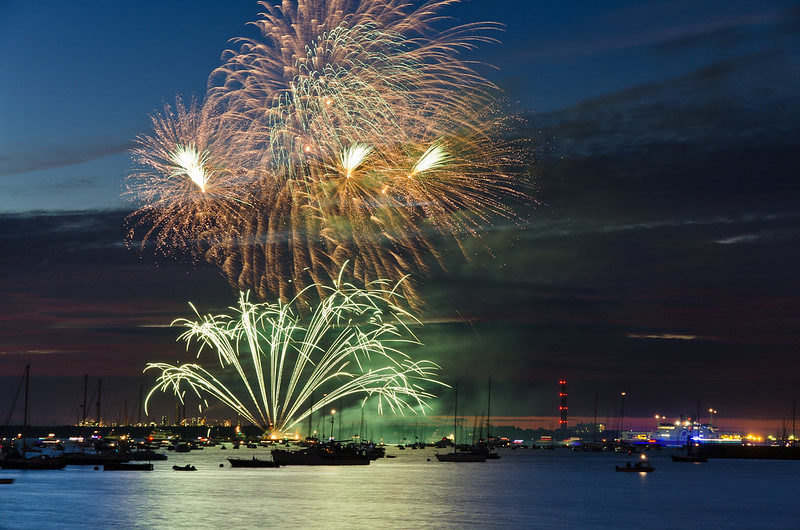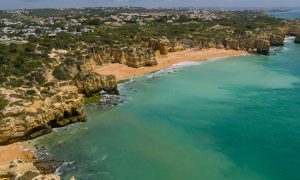Adam Jacot Explores Isle of Wight
Wild garlic and red squirrels. Dinosaurs and fossils. Chines and downs. Esplanades and promenades. What a glorious gem is the Isle of Wight. So old-worldly and quaint. It took me back in an instant to my bucket and spade holidays forty years ago and reminded me of how England used to be: red telephone boxes strategically placed and thatched cottages perfectly clipped. Frequent ferries go from different mainland ports to different ports on the isle. Mine came from Southampton to East Cowes whose church on the hill and yachts in the marina came slowly into view. Cowes is the home of British yachting and gives vent to the isle’s nautical expression with its world-renown Royal Yacht Squadron club and its August regatta. The sea either laps or pounds and I recommend driving along the south coast’s Military Road. So dramatic, romantic and picturesque with the wilderness of West Wight showing rows upon rows of white waves finally reaching their destination.

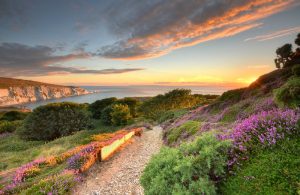
The poet Keats’ line “A thing of beauty is a joy forever” was composed on his way to the isle and is now Shanklin’s motto. Up a cul-de-sac in this town and overlooking the seafront is Haven Hall Hotel (www.havenhallhotel.com). It’s the brainchild of David and Arielle Barratt who spent four years renovating this 1908 Edwardian Country House. Only open from Easter to September, its gates make it so secluded, so private and exclusive. A true haven.
They also lovingly landscaped the gardens to maximise the expansive sea view. I loved the gazebo and bright flower beds, the white garden furniture and grass tennis court and the outdoor heated pool. All was absolutely immaculate and pristine: the lawn as calm and smooth as the sea in its uninterrupted view beyond. For the hotel itself is on the cliff top overlooking Hope Bay and beside it I walked one morning along the path further down to Sandown Bay to reach Shanklin Chine. A chine (of which there are 21 on the isle) is a local Saxon word for a deep, narrow ravine and this one is home to some gorgeous herbaceous gunnara plants sprouting vivaciously.
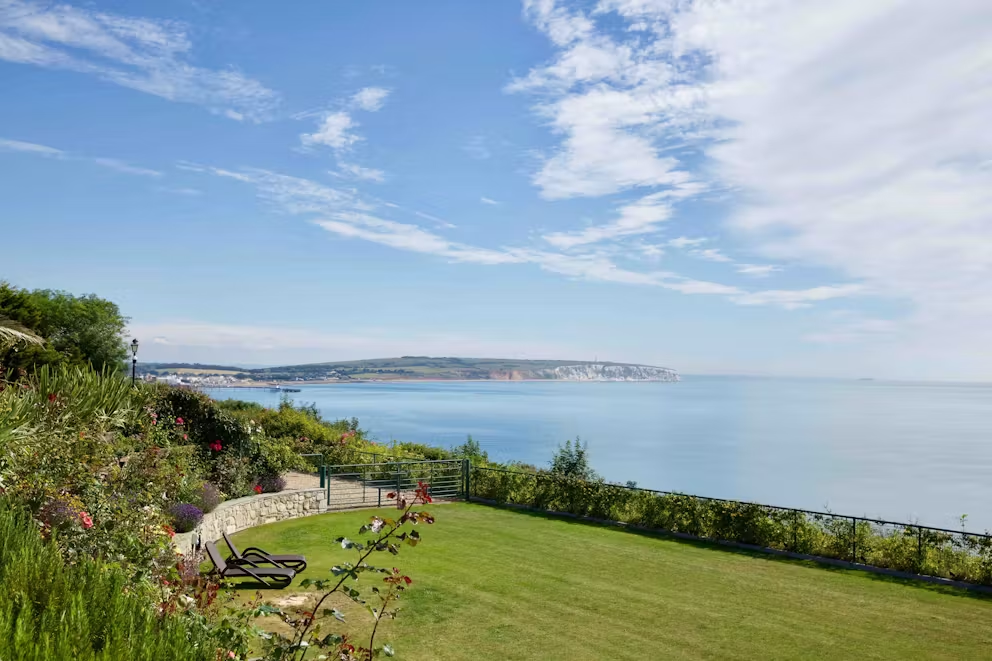
Haven Hall Hotel has a distinctive exterior with its towers and angular architecture: a classic example of the Arts and Crafts period. The entire interior is luxuriously decorated and the drawing room has two lovely bay windows. The furniture consists of mahogany hall tables, antiques and chandeliers. Everywhere has impressively high finishing. I felt I was in a private house. The 14 rooms (with rates starting from £420) are named after the isle’s famous visitors like Keats and Dickens. The style of the common rooms is consistent with the bedrooms having hand-sewn headboards and thick curtain drapes. Some look out to sea; all have bathrooms with marble washstands and Penhaligon toiletries. There is no restaurant: instead a continental breakfast suffices. Recent guests have included Oscar-winning actors, comedians, footballers and political grandees not to mention the Governor of Bank of England. No wonder there’s a helipad. No wonder 2024 TripAdvisor awarded the hotel number 3 in the UK for its small luxury hotel category. A true luxury boutique hotel it was.
From seaside havens to inland heaven for here south of Newchurch is The Garlic Farm (www.thegarlicfarm.co.uk). Very inspiring and engaging. Very forward-thinking and yet returning to old ways that work. Very eco-conscious and using certified organic farmland this is a highly successful complex comprising a shop, restaurant, accommodation and farm trails. The 20-year old daytime restaurant is in 3rd generational hands and has a trendy, rustic interior offering playful and entertaining info about the farm. Such generous helpings of colourful food. Such garlic-inspired dishes using locally sourced ingredients; there’s even black garlic ice cream! To walk it off I followed the farm trail through wonderful woodlands and wildflower meadows.
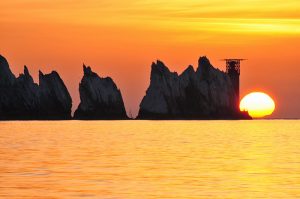
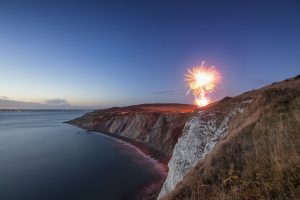
The isle has endured various incarnations: from Roman outpost (known as Vectis) to being a Victorian seaside resort. The Needles are the emblem of the island, consisting of jagged chalk stacks that rise from the sea like nature’s own abstract sculptures. The isle has 800 B+Bs and hotels and is now a rival to Cornwall in its touristic appeal. To my mind it’s unquestionably the better choice.
Fifteen minutes from the hotel in Victorian Ventnor is the Royal Hotel (www.royalhoteliow.co.uk) and its restaurant called Geranium. This long, grand dining room felt very smart and established. Indeed the hotel opened in 1832 for Queen Victoria soon to hold tea parties. How very elegant and plush it was with its nautical blue and white décor, its fittingly regal swags and its fourteen chandeliers. It looked out to a sub-tropical garden studded with the occasional colonial-style wicker chair. The youthful staff were eager to help. I strongly recommend the roasted aubergine and red pepper soup. With its confident menu it’s definitely a place for a real treat.
Set further down and on the seafront in Ventnor (with a sister restaurant in Cowes), Smoking Lobster (www.smokinglobster.co.uk) is an utter delight. Its understated frontage and neutral décor within allows the food to take centre stage. After all it’s so tasteful and classy that it doesn’t need to shout. I sat out by the sea to enjoy the restaurant’s signature dish: a beautifully presented seafood platter, Japanese-style, that included crab, lobster, scallops and seabass paired with black bean sauce. How special to have the bounty of the sea all on one plate.
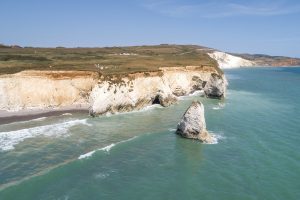

I love islands. There’s something about them: their own distinctive character, unalloyed and self-reliant. This island is a perfect size: easily navigable with nowhere more than a 40-minute drive away, and yet large enough to have wide expanse and variety of land. Wherever I roamed I knew that at the crest of a hill either the sea might come into view, gleaming from afar or else there would be wonderfully broad uninhabited vistas: be they sweeps of swaying fields or windswept cliffs.
Bembridge is a charming village at the far eastern tip of the island. Here is the Crab & Lobster Inn (www.characterinns.co.uk) which offered me wonderful fish well-presented and in generous helpings. Well-lit and uber-cool the interior felt upbeat with interesting nooks and crannies, beckoning fireplaces and nautical artefacts. It felt rustic with its raw walls of brickwork and stone. Here I dined al fresco and watched the ships and liners in their channel punctuating the horizon. Such a delight.
The isle has rolling hills and changing contours. Fields of every colour imaginable. Dappled avenues with their trees’ leaves intertwining across the roads. All so spacious and unspoilt. All adding to the melody and the movement of this music-summoning isle. Indeed what an inspiration it has proved with its constant interplay of light, sea and sky, lending itself to poetic reflection and drawing many distinguished writers and artists including Tennyson, Keats, Longfellow, Turner and Dickens.
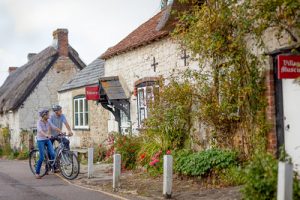
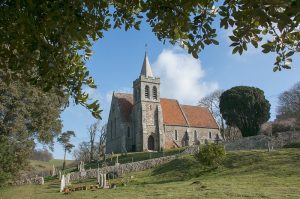
I came to Seaview, a village overlooking the stretch of water called Spithead and Portsmouth beyond. Here at Seaview Hotel (www.seaviewhotel.co.uk) is The Aquitania restaurant. Indeed the interior pays due homage to this pleasure cruiser of the early 20th century, with black and white photos of the jet-set in those bygone years. It’s a small, cosy, intimate setting at the front of the hotel with just eight tables though with the added option to sit outside where only yards away is the seafront with its plethora of bobbing boats. I loved the local popular dish on offer that was crab ramekin: white and brown crab meat, a cheesy bechamel sauce, Worcester sauce, tarragon and Dijon mustard.
Close to Cowes, and before my return ferry, I visited Osborne House. It was Queen Victoria’s summer retreat, the setting for her happiest private time with Albert and also where she died. It’s a perfect museum to Victoriana with its long corridors, marble and wood. The walls are lined with pictures of alpine landscapes and portraits of Indian gentlemen. The exterior is inventively Italianate, with a walk down their private beach past the Lebanese cedars and Monterey oaks planted by Albert. The Walled Garden nearby the House is a delightful riot, a vibrant splendour of its own, and the former Orangerie is now an impressive Terrace Restaurant.
I must go back to this enchanted isle. Whenever but soon.
WORDS: Adam Jacot de Boinod
FACT BOX
Adam had support from Visit Isle of Wight www.visitisleofwight.co.uk. He was covered by online travel insurance specialist, CoverForYou www.coverforyou.com, 0207 183 0885
Imagery: VisitIsleOfWight.co.ukhttps://www.flickr.com/photos/visitisleofwight/albums/


